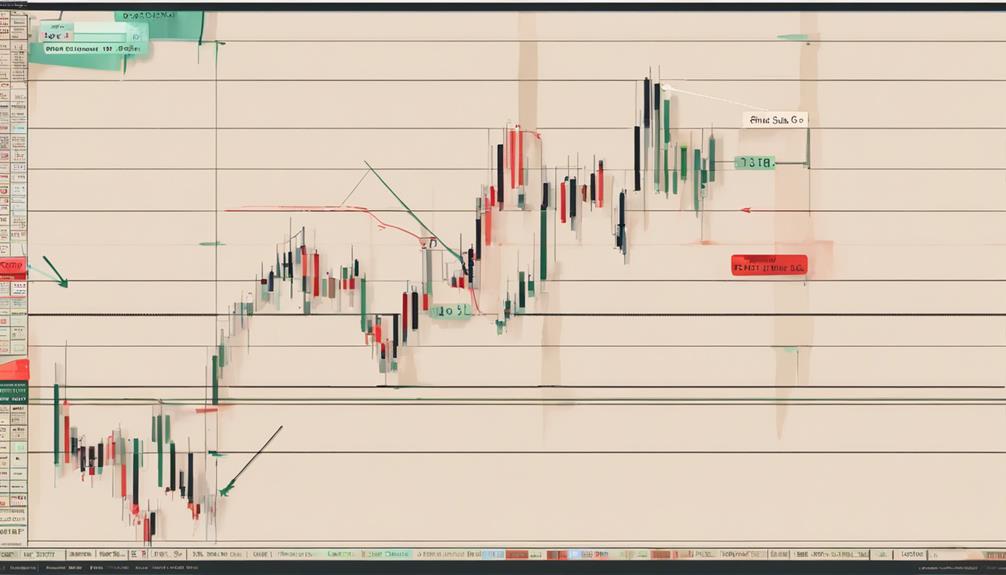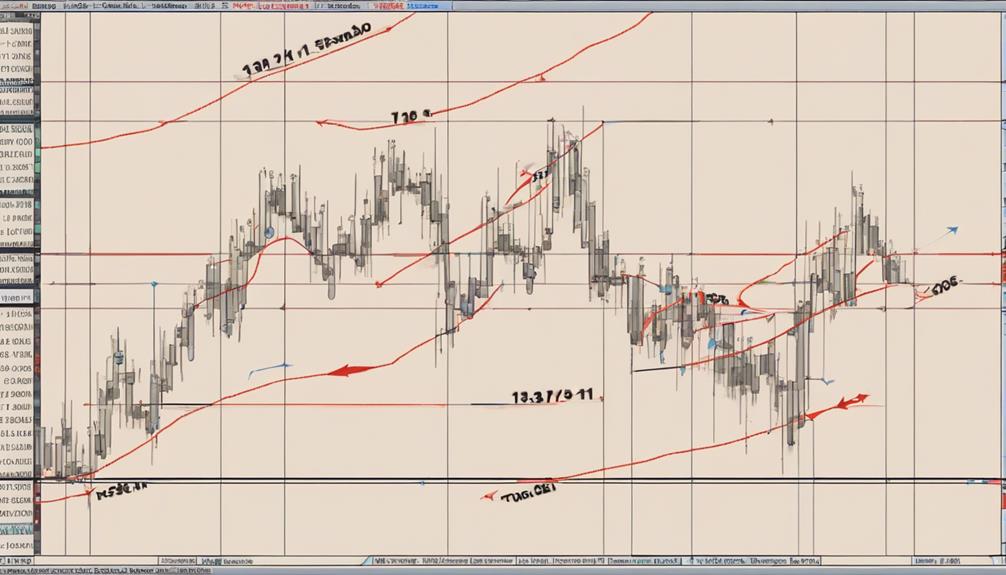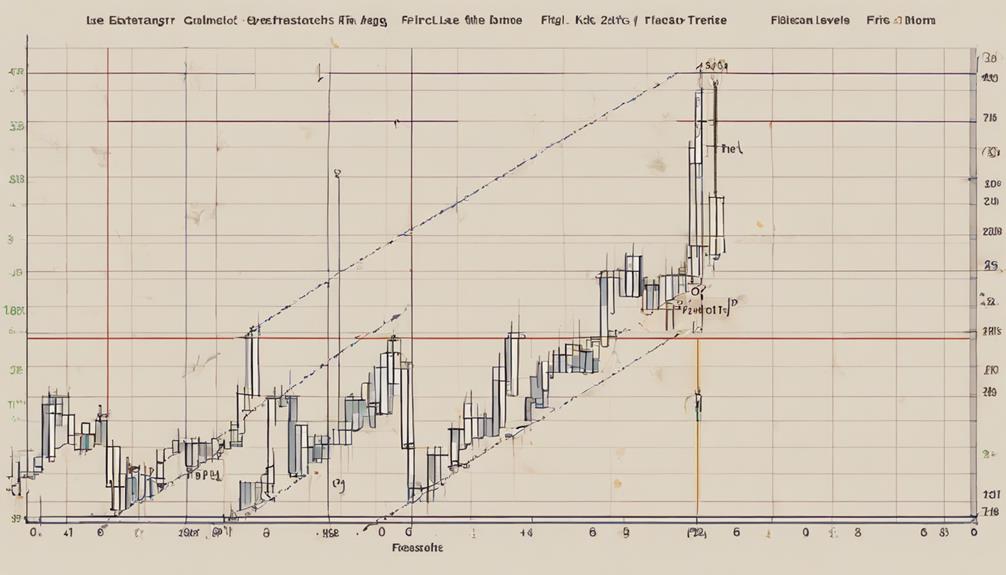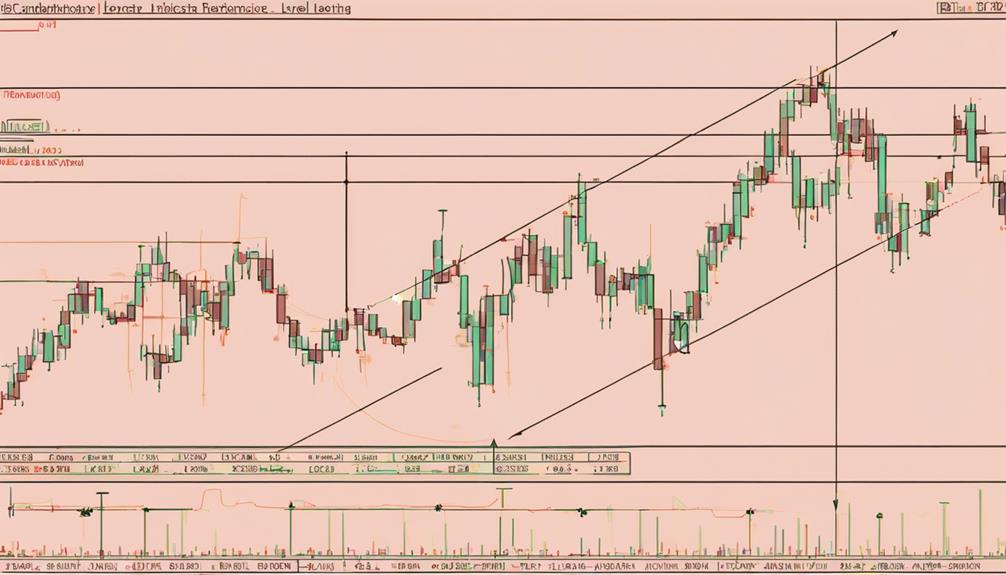As you navigate the intricate world of Forex trading with Fibonacci extensions, envision the Fibonacci sequence as your guiding compass. Understanding its significance can unlock a realm of possibilities in predicting market movements.
However, grasping the basics is just the tip of the iceberg. There are five fundamental tips that can elevate your trading game to new heights, ensuring you stay ahead of the curve in this dynamic market landscape.
Understanding the Fibonacci Sequence
Understanding the Fibonacci sequence forms the fundamental building block for effectively utilizing Fibonacci extensions in technical analysis within the realm of forex trading.
The Fibonacci sequence, starting with 0 and 1, generates numbers like 0, 1, 1, 2, 3, 5, 8, 13, 21, and so forth, forming the basis for Fibonacci analysis and price target predictions.
These numbers create a mathematical framework to identify key levels in market movements. By applying Fibonacci ratios derived from this sequence, traders can anticipate potential reversals or extensions in price action, aiding in strategic decision-making.
In forex trading, comprehending the Fibonacci sequence is essential for conducting precise technical analysis and leveraging Fibonacci extensions to forecast market behavior accurately.
Identifying Swing High and Swing Low

Identifying swing highs and swing lows is crucial in technical analysis for pinpointing key market turning points and establishing effective trading strategies. When you identify Swing High and Swing Low, you can:
- Utilize Fibonacci retracement tool accurately.
- Spot potential support and resistance levels for informed decisions.
- Enhance understanding of price action dynamics.
- Anticipate trend reversals for strategic entries and exits.
Recognizing these points lays the groundwork for implementing Fibonacci extension tools efficiently to set profit targets. By integrating Swing High and Swing Low into your analysis, you can better interpret market movements and make well-informed trading choices based on technical indicators.
Plotting Fibonacci Levels

To effectively utilize Fibonacci levels in your Forex trading analysis, start by understanding the key ratios and their significance in plotting potential support and resistance levels. Fibonacci retracements, derived from ratios like 23.6%, 38.2%, 50%, 61.8%, and 100%, are instrumental in Fibonacci Trading.
These levels, plotted on a chart using Swing High and Swing Low points, help traders identify critical price levels. By incorporating Fibonacci extension levels, traders can anticipate price movements with more precision. These levels act as both support and resistance, aiding traders in making informed decisions based on Technical analysis.
Skillfully plotted Fibonacci levels enable traders to gauge potential reversals, breakouts, and trend continuations accurately, enhancing their overall trading strategies.
Using Fibonacci Extensions for Price Targets

Utilizing Fibonacci extensions in your Forex trading strategy allows for precise prediction of potential price targets beyond the 100% level, enhancing your trade analysis and decision-making accuracy. When incorporating Fibonacci extensions into your trading strategy, consider the following:
- Projection Precision: Fibonacci extensions provide clear levels such as 127.2%, 161.8%, and 261.8% to project market moves accurately.
- Support and Resistance: These extension levels serve as areas of support or resistance, aiding in identifying crucial price levels.
- Setting Price Targets: Traders use Fibonacci extensions to anticipate price movements and establish effective profit targets.
- Risk Management: By incorporating Fibonacci extensions into your analysis, you can make informed trading decisions, managing risks more effectively.
Combining Fibonacci With Technical Analysis

By integrating Fibonacci extensions with technical analysis tools like moving averages or trend lines, traders can enhance the accuracy of their trade decisions. Fibonacci extensions help in predicting potential price targets beyond the 100% level in a market trend, providing traders with valuable insights for setting profit targets.
When analyzing market trends, traders often seek confluence between Fibonacci extension levels and other indicators to confirm their trading signals. This synergy between Fibonacci extensions and technical analysis offers a comprehensive approach to analyzing and predicting market movements.
Can You Provide Additional Tips for Successful Forex Trading Using Fibonacci Extensions?
Yes, I can provide a comprehensive guide on utilizing Fibonacci extensions in forex trading. Understanding key levels and using Fibonacci tools for entry and exit points can greatly enhance your trading strategy. In addition to Fibonacci retracement levels, Fibonacci extensions can provide valuable insights for successful trading.
Frequently Asked Questions
How Do You Use Fibonacci Extension in Forex?
To use Fibonacci extensions in Forex, identify key levels like 127.2%, 161.8%, and 261.8% beyond the 100% retracement level. These levels help set profit targets and pinpoint potential trend reversals. Enhance your trading precision with Fibonacci extensions.
What Are the Most Important Fibonacci Extension Levels?
You might think the most crucial Fibonacci extension levels are 127.2%, 161.8%, and 261.8%. These levels signal potential support or resistance in trading. Understanding and applying these levels can improve your trade decisions.
What Are the Most Important Fibonacci Levels Forex?
In Forex trading, the most crucial Fibonacci levels are 38.2%, 50%, and 61.8% retracement levels. These levels help identify support and resistance areas, predict price movements, set profit targets, and manage risk effectively.
What Is the 5 3 1 Forex Strategy?
The 5 3 1 Forex strategy involves using key Fibonacci extension levels like 127.2%, 161.8%, and 261.8% to set profit targets. By applying this strategy alongside other tools, you can pinpoint potential price targets for successful trades.
Conclusion
As you wrap up your Forex trading journey with Fibonacci extensions, remember to stay diligent in analyzing price charts and identifying key levels.
By combining Fibonacci with technical tools and adapting strategies for different timeframes, you can enhance your trading success.
Just like a skilled architect carefully constructs a blueprint to create a masterpiece, your use of Fibonacci extensions in Forex trading will help you build a solid foundation for profitable trades.
Stay focused, stay disciplined, and watch your profits soar.
